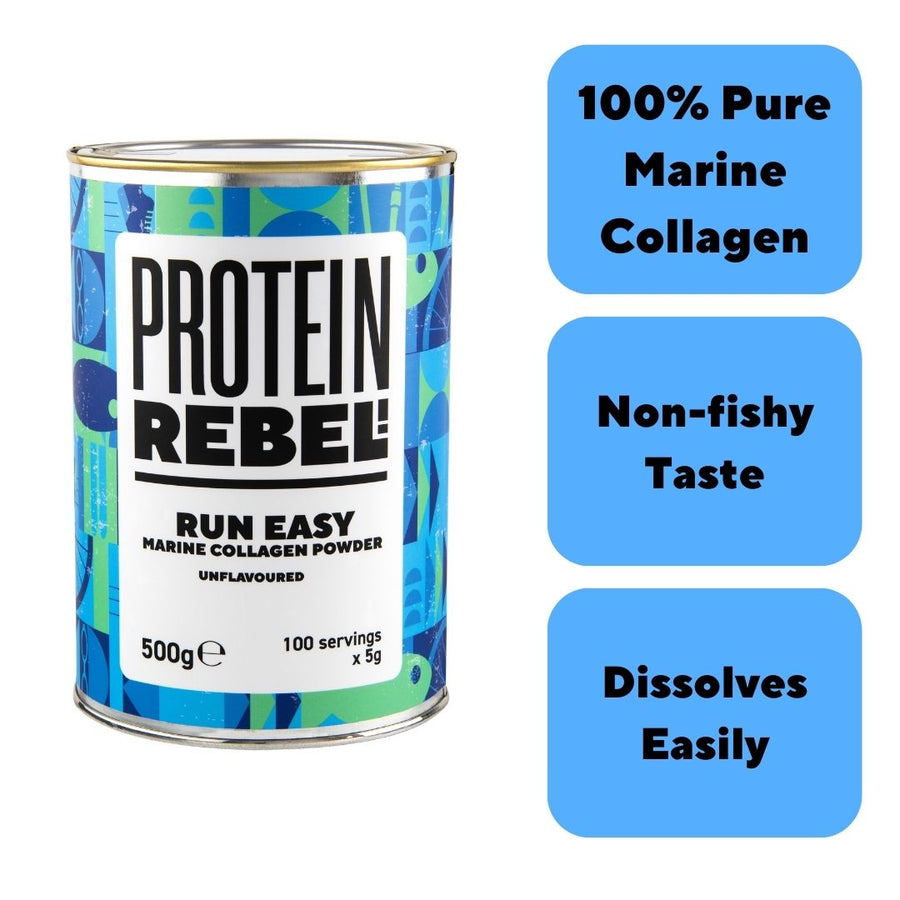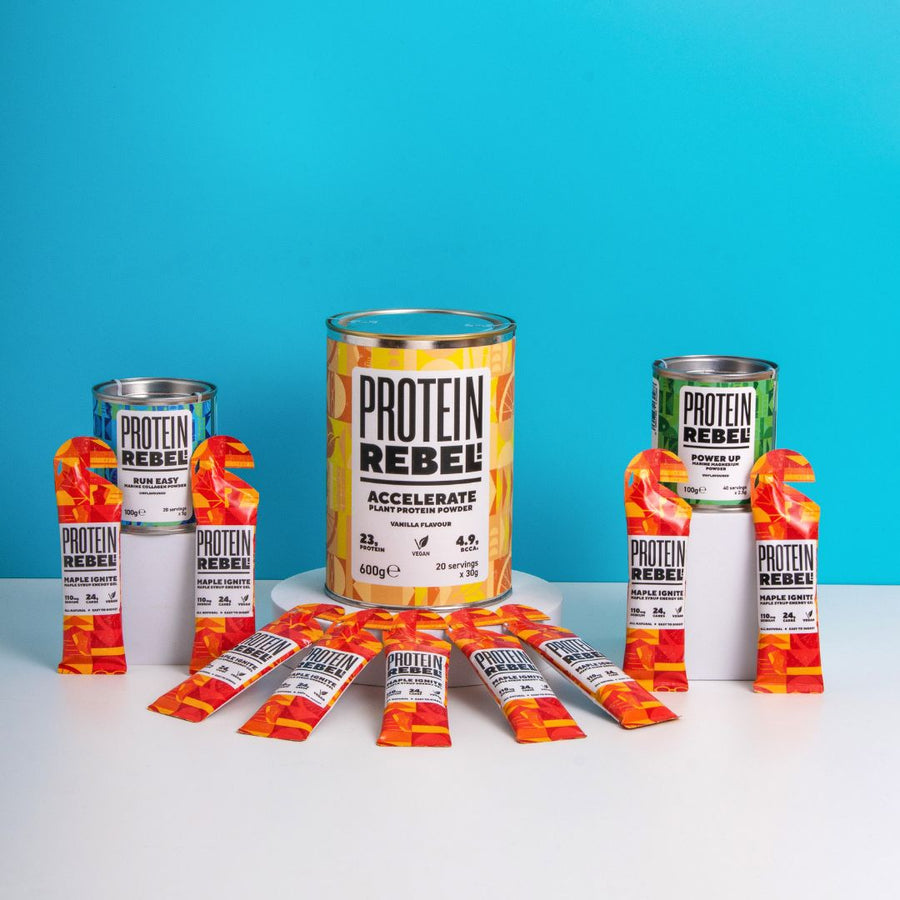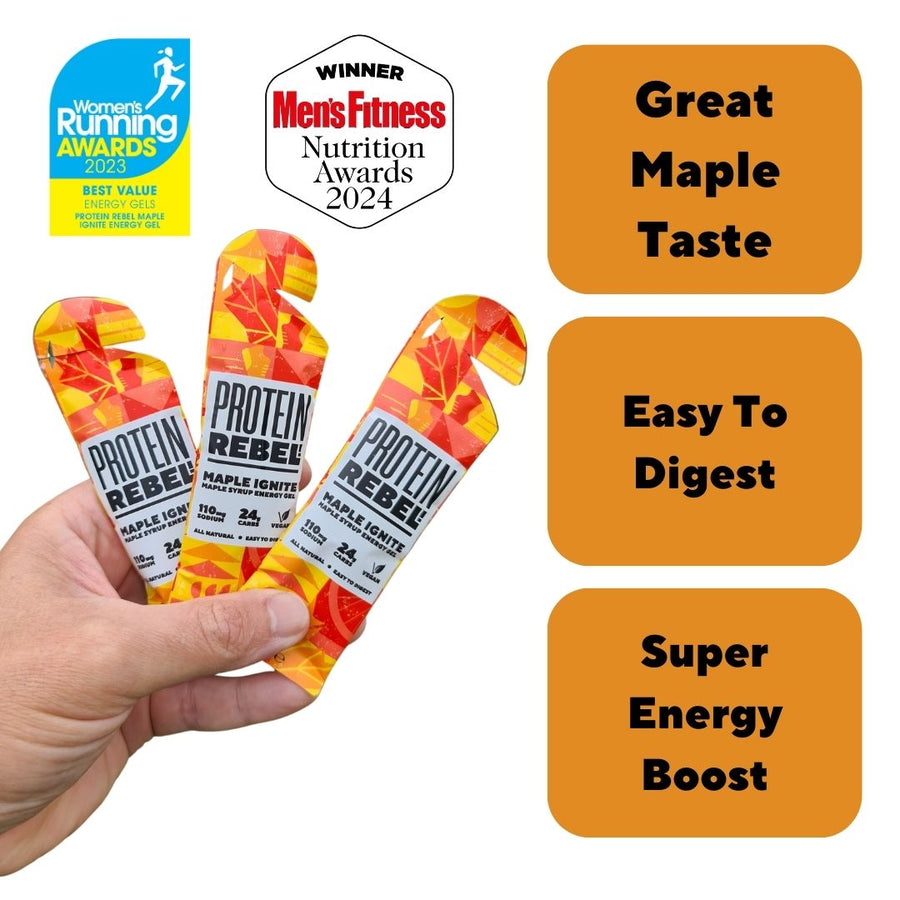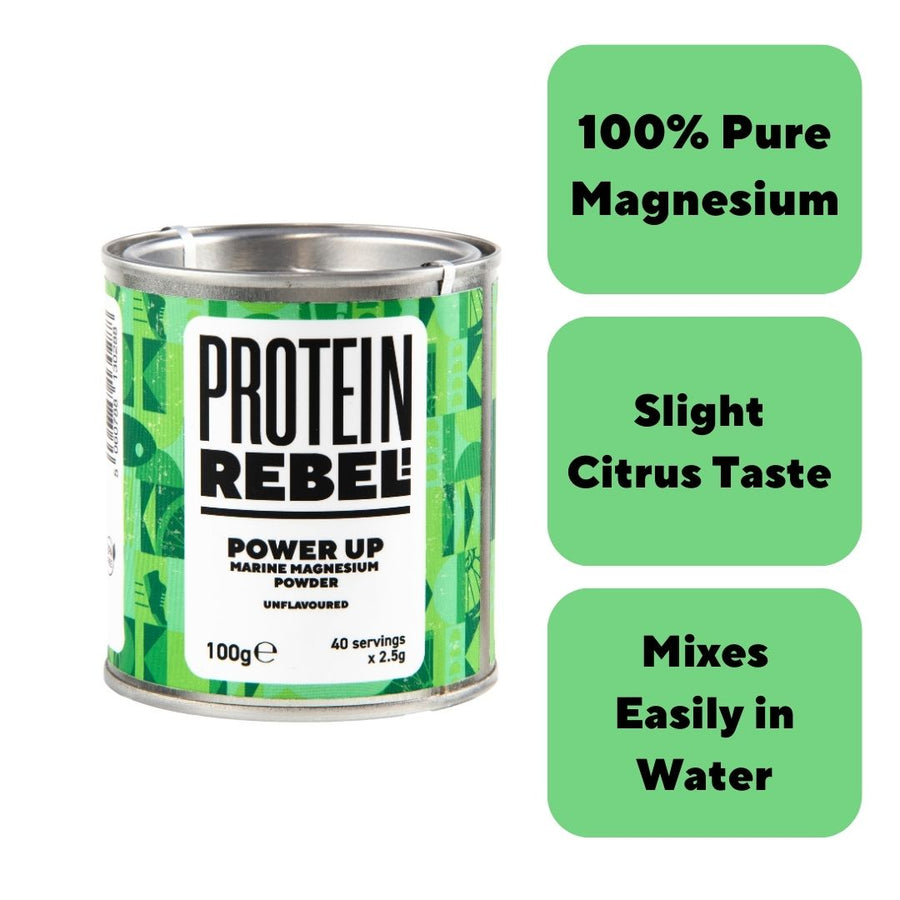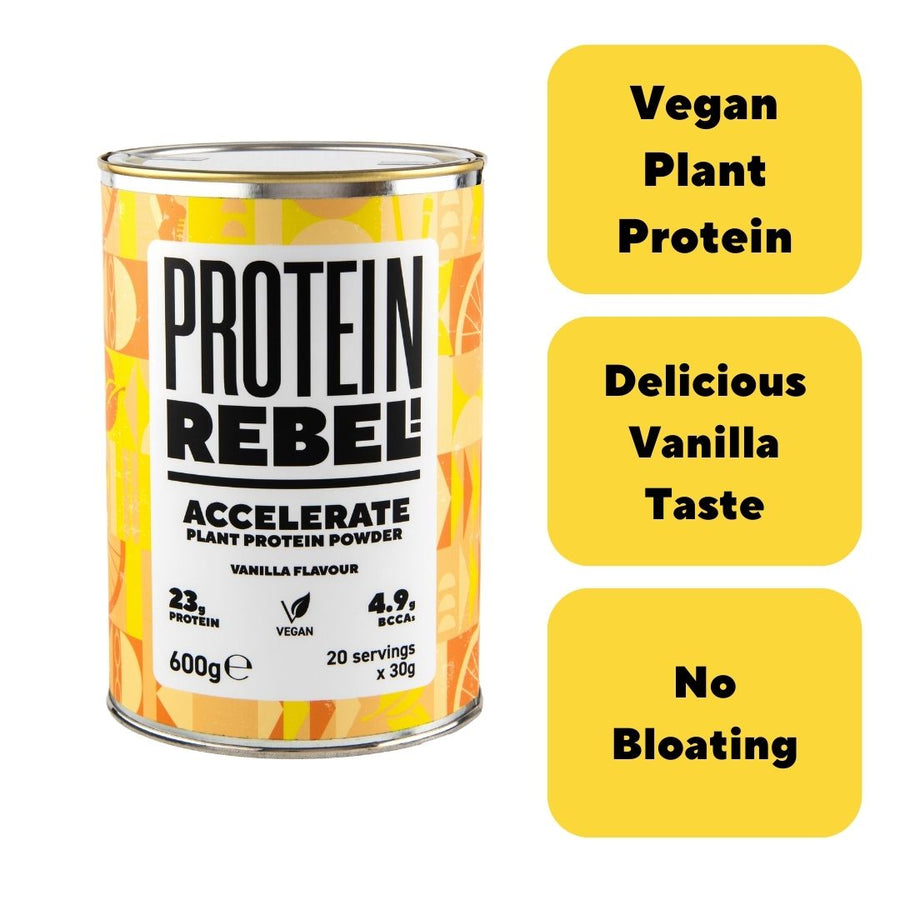Sodium for Endurance Runners - The Complete Guide
If you regularly run for over an hour, especially in warm conditions, you’ve probably felt the salt taste on your lips, the sense of fatigue setting in, and maybe even cramps, seemingly appearing out of nowhere.
Sodium could well be the reason. It is one of the most overlooked, yet important minerals for endurance athletes, especially runners.
Getting it right before you run can be the difference between finishing strong and struggling through your last few miles, and getting it right afterwards can transform your recovery.
Here’s a bit more on why:
Why Sodium Matters for Runners
Sodium is an essential electrolyte, meaning your body can’t produce it naturally and it needs to come from your diet or fluids.
It helps with multiple roles in the body:
-
Fluid balance: Sodium helps regulate how much water is inside and outside of your cells, which when combined with drinking enough water, ensures proper hydration.
-
Nerve function: Proper nerve signalling makes use of sodium, which is important for muscle contractions while running.
-
Preventing cramp: Low sodium levels can contribute to muscle cramps during long runs.
-
Blood pressure regulation: Sodium helps maintain a healthy blood pressure, which supports cardiovascular function during endurance efforts.
When you run, especially in warm conditions or for extended periods, you are likely to sweat. Sweat contains water, sodium, potassium, and other electrolytes. Losing too much sodium without replenishing it can lead to hyponatremia, a condition where blood sodium levels drop dangerously low, potentially causing dizziness, nausea, and in severe cases can be life threatening.
How Much Sodium Do You Lose in Sweat?

Sodium loss isn’t the same for every runner. It varies depending on sweat rate, the weather, training intensity, and individual differences. On average, runners lose between 500mg and 1500mg of sodium per litre of sweat.
To put that in context, a 20-mile run in hot conditions might see a runner sweat 2-3 litres of fluid. That’s anywhere from 1000mg to 4500mg of sodium lost just through sweat. Combine this with naturally lower sodium intake on race day, and it’s clear why electrolyte replacement matters.
While figuring out how much sodium you lose when running requires some analysis, you can certainly determine your rate of sweat loss by weighing yourself (nude) before and after a 1-hour run. Then subtract your post-run weight from your pre-run weight to find the difference. This assumes you haven’t drunk anything during your run, of course. If you have, you must also subtract the amount of fluid you drank, so it’s important to precisely measure your fluid intake.
Some people even taste their sweat to see how salty it is. Not the most scientific method, but it does help to give you an idea.
So how much sodium should runners aim to ingest each day to prevent these issues?
How Much Sodium per Day for Athletes?
Outside of running, the general adult population in the UK is advised to consume less than 2,300mg of sodium per day, roughly equivalent to one teaspoon of table salt. However, endurance athletes have very different needs to the average person, along with very different water intake.
During high volume training weeks, your sodium requirements can increase substantially compared to this number. Endurance athletes might need anywhere from 3,000mg to 7,000mg per day, depending on sweat rate and intensity of training.
It’s important to split this between your diet and fluids. Whole foods such as soups, salted nuts, cheese, and even certain breads can provide some baseline sodium. During longer runs or races, natural energy gels with added electrolytes, electrolyte powders/tablets or even food with sea salt added can help maintain sodium levels.
Sodium Loading: Can It Help Performance?
Just like carb loading before a marathon, some runners use sodium loading to prepare for long events. The idea is to increase sodium intake a day or two before a race. This can improve endurance by allowing your body to carry more fluid and delay dehydration.
A typical sodium loading strategy involves increasing sodium intake to around 5-7g per day for 24-48 hours before the event. This is often combined with slightly higher fluid intake to help your body store more water, but don’t overdo it.
Important points for runners considering sodium loading:
-
Don’t try it for the first time on race day. Practice during training to see how your body responds.
-
Stick to whole foods where possible. Salty broths, lightly salted pasta, or soups work well.
-
Consider adding Maple Ignite gels to your breakfasts in the run-up and on the day of the event to maintain your increased sodium levels.
If done correctly, sodium loading (without overdoing it) can help you maintain performance during long runs, particularly in hot conditions. But it’s not a replacement for your race hydration strategy., It’s simply another way to ensure you’re as prepared as possible.
Can You Overdose on Sodium?
Yes, though it’s a less common problem for endurance runners than it is for the general population consuming processed foods. Acute sodium overdose, known as hypernatremia, can occur if you consume too much sodium without adequate fluid. Symptoms can include dizziness, thirst, nausea, swelling and confusion.
For runners, this usually only happens if you take extremely high doses of electrolyte tablets or salt pills without balancing water intake properly.
Potassium vs Sodium for Hydration
Sodium often gets all the attention, but potassium is arguably equally important for endurance runners. Both electrolytes work together to regulate fluid balance, muscle contractions, and nerve signalling.
-
Sodium sits outside your cells, attracting water and helping maintain blood volume.
-
Potassium sits inside cells and works with sodium to ensure proper muscle contraction and prevent cramping.
When you sweat, sodium is lost in much greater quantities than potassium, but you still need to replenish both for optimal performance. A simple guideline: for every 400–500mg of sodium, aim for 100–200mg of potassium.
Both are necessary to maintain hydration and performance over long distances.
Practical Strategies for Sodium Replacement
So, what does all this mean in practice for runners? Here are some things worth keeping in mind:
-
Know your sweat rate: Weigh yourself pre and post run to estimate your fluid and loss. If you’re a heavy, salty sweater you may need to consume higher amounts of sodium on your runs.
-
Include sodium in your diet: Even on rest days, maintain moderate sodium intake from whole foods.
-
Use gels or sports drinks during long runs: For runs over 90 minutes, supplement with sodium containing products. Maple syrup gels with electrolytes are perfect for this, delivering carbs and sodium in a runner friendly format.
-
Consider environmental conditions: Hot, humid conditions increase sweat and sodium loss. Increase your sodium intake accordingly.
-
Practice during training: Never try a new sodium or hydration strategy on race day! In fact, this is becoming a theme in all of our guides - don’t try anything new on race day!
Timing Your Sodium Intake
When you take your sodium is just as important as how much:
-
Pre-run: A small amount (500–1000mg) can help set up fluid balance, especially for morning runs.
-
During run: Aim for roughly 300–500mg per hour for average sweat rates, higher for heavy sweaters or hot conditions.
-
Post-run: Replenish sodium lost in sweat alongside fluids, carbs, and protein. This helps restore hydration and aids recovery.
Signs You’re Low on Sodium
Knowing your own body is crucial. Signs that you may be low on sodium during a run include:
-
Early fatigue and unusually heavy legs
-
Muscle cramps
-
Dizziness or lightheadedness
-
Headache or nausea
Getting sodium right isn’t just about avoiding cramps. It can also directly impact how far, how fast, and how comfortably you run. By understanding your own sweat rate, experimenting in training, and using sodium strategically, you’ll be able to perform better and recover faster.
Things to Try
-
Track your sweat rate on your next run.
-
Try Maple Ignite gels with electrolytes and note how they affect fatigue and cramps during your run.
-
Pair sodium intake with other electrolytes, such as potassium and magnesium, together with proper hydration and carb fuelling for optimal performance.
